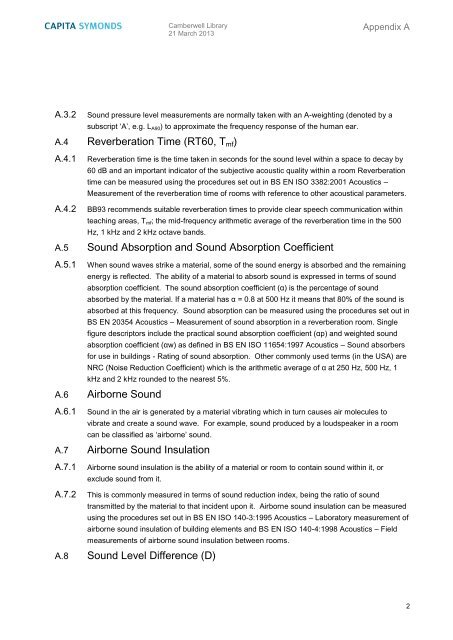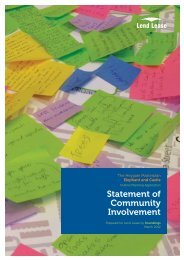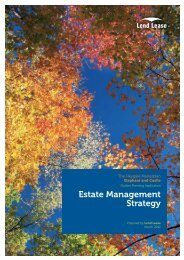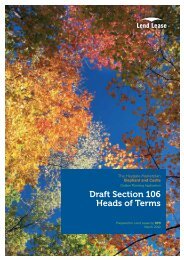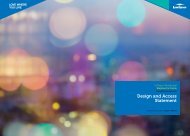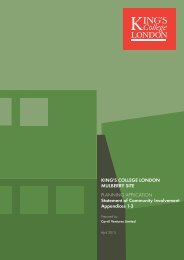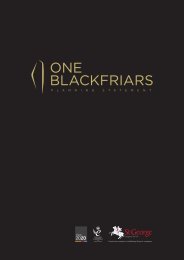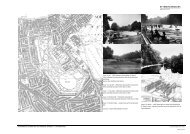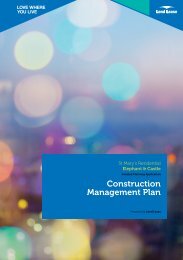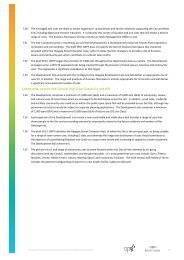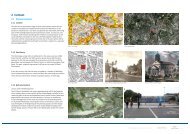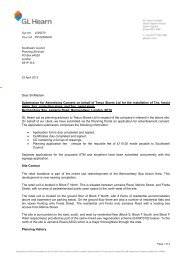Web Document Noise impact assessment 2013-04-20 - Southwark ...
Web Document Noise impact assessment 2013-04-20 - Southwark ...
Web Document Noise impact assessment 2013-04-20 - Southwark ...
You also want an ePaper? Increase the reach of your titles
YUMPU automatically turns print PDFs into web optimized ePapers that Google loves.
Camberwell Library21 March <strong><strong>20</strong>13</strong>Appendix AA.3.2Sound pressure level measurements are normally taken with an A-weighting (denoted by asubscript ‘A’, e.g. L A90 ) to approximate the frequency response of the human ear.A.4 Reverberation Time (RT60, T mf )A.4.1Reverberation time is the time taken in seconds for the sound level within a space to decay by60 dB and an important indicator of the subjective acoustic quality within a room Reverberationtime can be measured using the procedures set out in BS EN ISO 3382:<strong>20</strong>01 Acoustics –Measurement of the reverberation time of rooms with reference to other acoustical parameters.A.4.2BB93 recommends suitable reverberation times to provide clear speech communication withinteaching areas, T mf ; the mid-frequency arithmetic average of the reverberation time in the 500Hz, 1 kHz and 2 kHz octave bands.A.5 Sound Absorption and Sound Absorption CoefficientA.5.1When sound waves strike a material, some of the sound energy is absorbed and the remainingenergy is reflected. The ability of a material to absorb sound is expressed in terms of soundabsorption coefficient. The sound absorption coefficient (α) is the percentage of soundabsorbed by the material. If a material has α = 0.8 at 500 Hz it means that 80% of the sound isabsorbed at this frequency. Sound absorption can be measured using the procedures set out inBS EN <strong>20</strong>354 Acoustics – Measurement of sound absorption in a reverberation room. Singlefigure descriptors include the practical sound absorption coefficient (αp) and weighted soundabsorption coefficient (αw) as defined in BS EN ISO 11654:1997 Acoustics – Sound absorbersfor use in buildings - Rating of sound absorption. Other commonly used terms (in the USA) areNRC (<strong>Noise</strong> Reduction Coefficient) which is the arithmetic average of α at 250 Hz, 500 Hz, 1kHz and 2 kHz rounded to the nearest 5%.A.6 Airborne SoundA.6.1Sound in the air is generated by a material vibrating which in turn causes air molecules tovibrate and create a sound wave. For example, sound produced by a loudspeaker in a roomcan be classified as ‘airborne’ sound.A.7 Airborne Sound InsulationA.7.1Airborne sound insulation is the ability of a material or room to contain sound within it, orexclude sound from it.A.7.2This is commonly measured in terms of sound reduction index, being the ratio of soundtransmitted by the material to that incident upon it. Airborne sound insulation can be measuredusing the procedures set out in BS EN ISO 140-3:1995 Acoustics – Laboratory measurement ofairborne sound insulation of building elements and BS EN ISO 140-4:1998 Acoustics – Fieldmeasurements of airborne sound insulation between rooms.A.8 Sound Level Difference (D)2


